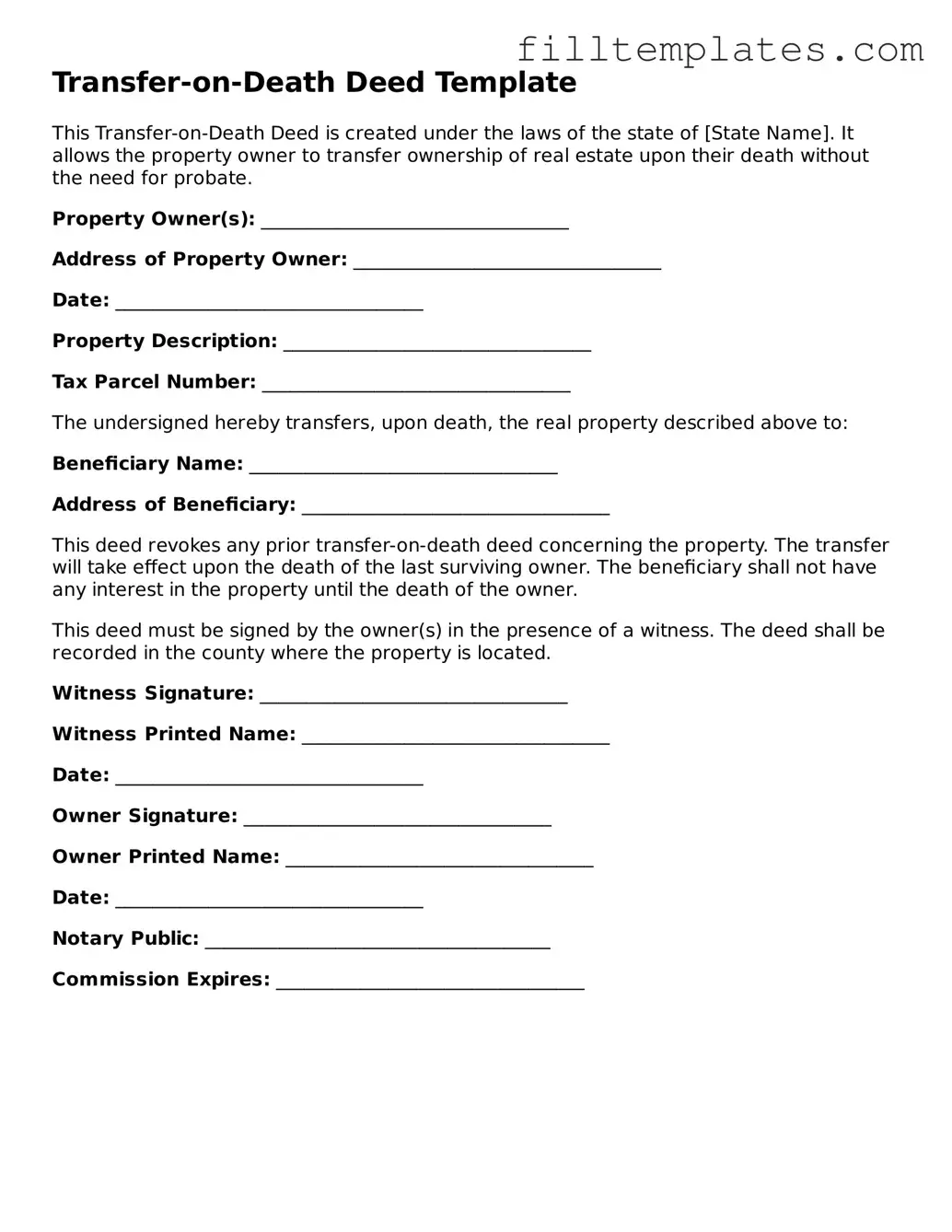Transfer-on-Death Deed Template
This Transfer-on-Death Deed is created under the laws of the state of [State Name]. It allows the property owner to transfer ownership of real estate upon their death without the need for probate.
Property Owner(s): _________________________________
Address of Property Owner: _________________________________
Date: _________________________________
Property Description: _________________________________
Tax Parcel Number: _________________________________
The undersigned hereby transfers, upon death, the real property described above to:
Beneficiary Name: _________________________________
Address of Beneficiary: _________________________________
This deed revokes any prior transfer-on-death deed concerning the property. The transfer will take effect upon the death of the last surviving owner. The beneficiary shall not have any interest in the property until the death of the owner.
This deed must be signed by the owner(s) in the presence of a witness. The deed shall be recorded in the county where the property is located.
Witness Signature: _________________________________
Witness Printed Name: _________________________________
Date: _________________________________
Owner Signature: _________________________________
Owner Printed Name: _________________________________
Date: _________________________________
Notary Public: _____________________________________
Commission Expires: _________________________________
